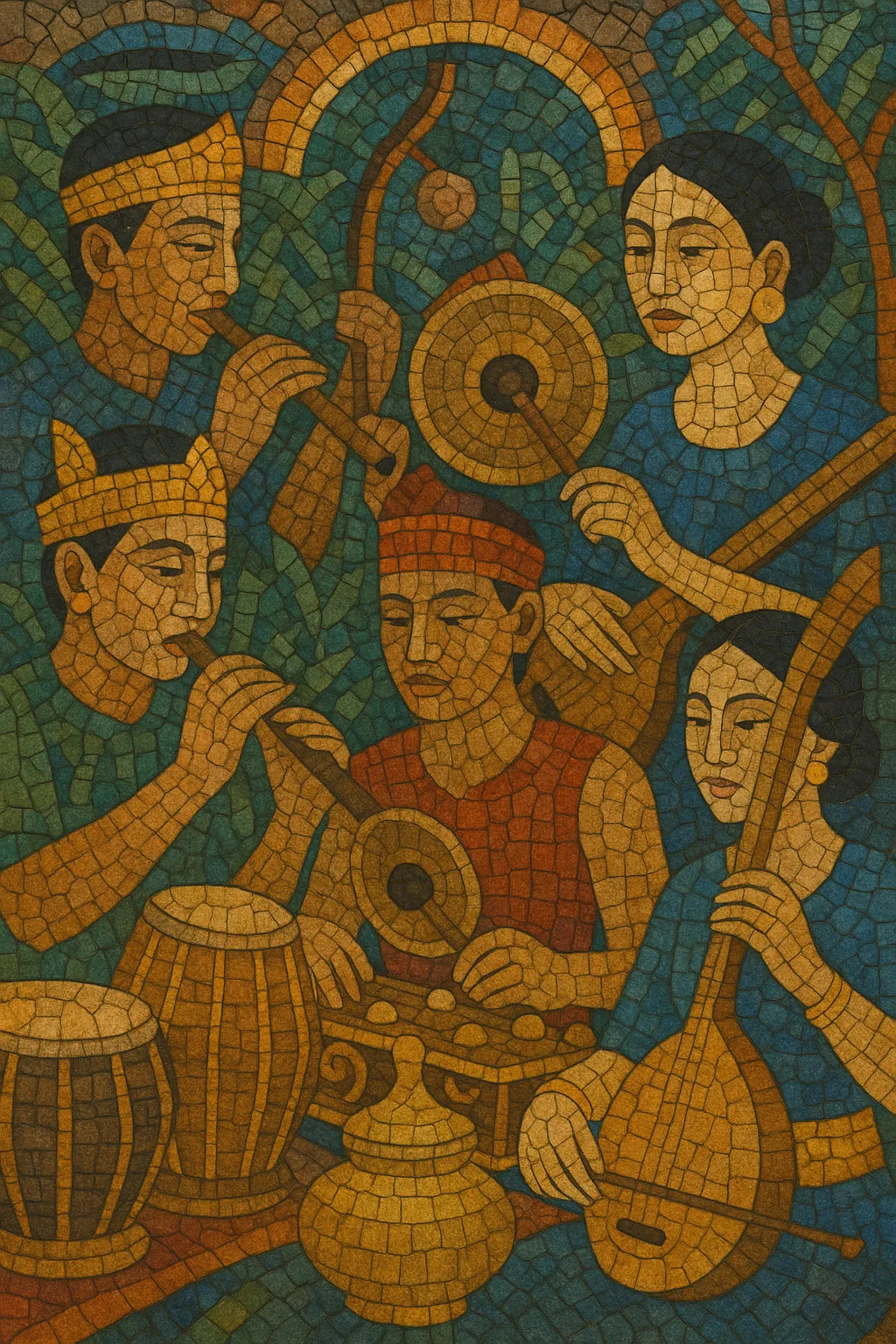Southeast Asian music is a broad regional umbrella that encompasses the court, temple, folk, and popular traditions of countries such as Indonesia, Thailand, Vietnam, Cambodia, Laos, Myanmar, Malaysia, the Philippines, Brunei, and Timor‑Leste.
Across the region, musical practice favors cyclic forms, interlocking (hocketing) patterns, heterophonic textures, and colotomic structures in which gongs articulate time. Modal systems vary: Javanese and Balinese ensembles often use sléndro and pélog tunings, Thai and Khmer court ensembles use equidistant heptatonic sets, and Vietnamese genres employ nuanced modal “hơi” with rich ornamentation. Instruments are dominated by gong‑chime sets, metallophones, xylophones, drums, bamboo flutes, double‑reed oboes, mouth organs, zithers, spike fiddles, and plucked lutes.
While deeply rooted in indigenous cosmologies, ritual, and dance‑theatre, Southeast Asian music is also a confluence zone shaped by maritime trade with South Asia, China, and the Islamic world, yielding distinctive syncretic lineages that continue into contemporary popular styles.
Archaeological, epigraphic, and iconographic evidence from Java and Angkor indicates sophisticated court and temple ensembles by the 900s–1200s. Colotomic gong cycles, interlocking metallophone parts, and dance‑theatre traditions (wayang, lakhon) crystallized in Hindu‑Buddhist courts, establishing durable musical grammars.
With Indian Ocean and South China Sea trade, the region absorbed South Asian modal thought, Arab‑Persian melodic aesthetics, and Chinese organology. Islam spread through the Malay world, introducing Quranic recitation, nasheed, and maqām‑inflected melodic sensibilities that blended with local gong‑chime practices, giving rise to forms like zapin and, later, dangdut’s precursors.
Portuguese, Spanish, Dutch, French, and British presences brought European instruments (violin, guitar, brass, piano), notation, and harmony. Hybrid idioms emerged—such as keroncong (Portuguese roots in Indonesia), brass‑band influences in Myanmar and Vietnam, and salon/urban theatre genres—while court musics adapted to new patronage systems and public performance spaces.
Post‑independence cultural policies supported conservatories, radio orchestras, and national ensembles, codifying repertories like gamelan, piphat, pinpeat, kulintang, and nhạc cổ. Parallel popular scenes adopted Western instruments, resulting in rock, folk, and later electronic and hip‑hop fusions carrying regional melodic and rhythmic DNA.
Southeast Asian music travels globally via festivals, conservatories, and digital platforms. Composers and bands integrate colotomic cycles, interlocking patterns, and pentatonic/hemitonic modes into jazz, contemporary classical, ambient, and electronic genres—sustaining a living continuum from ritual to club and concert hall.


